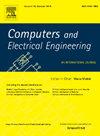加强跌倒预防:利用智能手杖和基于边缘的 IoMT 进行实时混合分析
IF 4.9
3区 计算机科学
Q1 COMPUTER SCIENCE, HARDWARE & ARCHITECTURE
引用次数: 0
摘要
人体跌倒对老年人构成重大风险。跌倒可能导致住院治疗,甚至死亡。老年人跌倒的主要原因通常与失去平衡或肢体支撑不足有关。虽然预防跌倒很难,但跌倒风险分析有助于预测和预防未来的跌倒。本研究提出了一种实时三向混合跌倒风险因素分析方法,采用了智能手杖。它采用基于边缘的 IoMT(医疗物联网)架构,可扩展到云端。智能手杖有一个带 HX711 的 10 千克称重传感器(YZC-133)(安装在手柄上)和一个与 ESP8266 WiFi 微控制器(MCU)配对的 MPU 6050 运动传感器,用于将加速计、陀螺仪和称重传感器数据传输到处理单元。该系统可将受试者分为高/中/低/无风险类别,从而进行精细的跌倒分析。该系统使用临床上确定的参数和测试,以低成本进行多模态分析,这些参数和测试基于定时起立行走(TUG)、力量测试和步态分析模块。然后将每个模块的单独结果结合起来,预测最终的风险类别。长期分析是在云服务器上完成的,该系统预测跌倒的准确率最高可达 92%。本文章由计算机程序翻译,如有差异,请以英文原文为准。
Enhanced fall prevention: A real-time hybrid analysis with smart walking stick & Edge-based IoMT
Human fall poses a significant risk for the elderly. A fall can result in hospitalization or, tragically, death. The primary causes of falls among the elderly are often linked to a loss of balance or insufficient limb support.
While fall prevention is difficult, fall risk analysis can help predict and prevent future falls. The present work proposes a real-time 3-way hybrid fall risk factor analysis methodology, , employing a smart walking stick. It uses an Edge-based IoMT (Internet of Medical Things) architecture that is extendable to the Cloud. The smart walking stick has a 10 kg load cell (YZC-133) with HX711 (mounted on the grip) and a MPU 6050 kinematic sensor paired with an ESP8266 WiFi Micro Controller (MCU) to transfer the accelerometer, gyroscope and load cell data to the processing unit.
A Raspberry Pi-based edge device evaluates pressure (support) on the grip and walking patterns using an accelerometer, gyroscope, and load sensor signals connected with ESP 8266. The system could perform fine grain fall analysis by classifying the subjects into the risk categories of High/Medium/Low/None. The system used the clinically established parameters and tests for its multimodal analysis at low cost based on Timed Up and Go (TUG), Force test and Gait analysis modules. The individual results from each module were then combined to predict the final risk category. The long-term analysis is done on a cloud server and the system could predict falls with a maximum of 92% accuracy.
求助全文
通过发布文献求助,成功后即可免费获取论文全文。
去求助
来源期刊

Computers & Electrical Engineering
工程技术-工程:电子与电气
CiteScore
9.20
自引率
7.00%
发文量
661
审稿时长
47 days
期刊介绍:
The impact of computers has nowhere been more revolutionary than in electrical engineering. The design, analysis, and operation of electrical and electronic systems are now dominated by computers, a transformation that has been motivated by the natural ease of interface between computers and electrical systems, and the promise of spectacular improvements in speed and efficiency.
Published since 1973, Computers & Electrical Engineering provides rapid publication of topical research into the integration of computer technology and computational techniques with electrical and electronic systems. The journal publishes papers featuring novel implementations of computers and computational techniques in areas like signal and image processing, high-performance computing, parallel processing, and communications. Special attention will be paid to papers describing innovative architectures, algorithms, and software tools.
 求助内容:
求助内容: 应助结果提醒方式:
应助结果提醒方式:


